What most ancient works of art created by prehistoric people tell us?
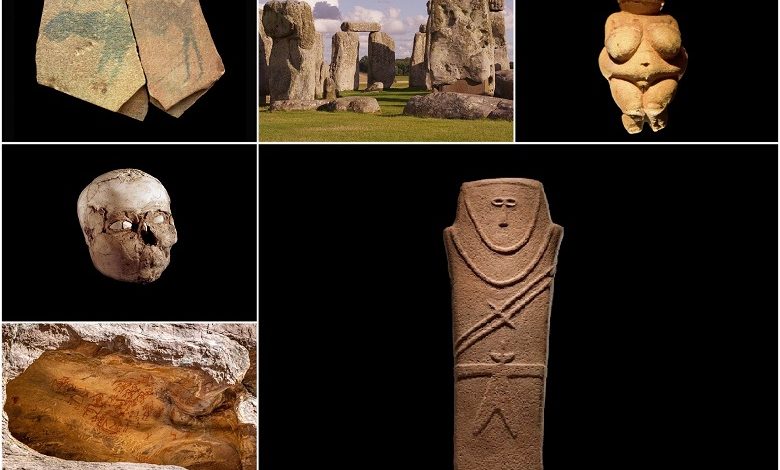
The great Nietzsche once said that life without music would be a mistake, and he was right. And although today disputes do not stop about what is more important – art or being, even prehistoric people strived for beauty.
The ancients created a huge number of works of art that today help archaeologists learn a lot about life at that time. In this review, “a dozen” prehistoric works of art and their amazing stories.
Apollo 11 stones

The Apollo 11 stones are seven stones (two of them used to be one piece) depicting animals. The most striking thing about these stones is their age – they date back to around 25,000 BC.
This discovery is extremely important because it demonstrated the incredible progress of humanity at that time. This shows that at this point, humans were partly thinking the same way as their descendants 27,000 years later, creating art and depicting their daily lives on stone. These artifacts were discovered in the Apollo 11 Cave in Namibia.
The stones, painted with coal, ocher, and other substances, told a lot about the people who lived at that time. The name was not chosen by chance, as the success of the Apollo 11 mission on the moon was widely reported on the radio shortly after archaeologists made their discovery.
Probably the most surprising part is that archaeologists have found evidence that humans inhabited it for 100,000 years (which means that the term “caveman” is very real, and this is how our ancestors survived the harsh, prehistoric world period of the Paleolithic). In addition, the Apollo 11 stones are the oldest piece of fine art found in Africa today.
Venus of Willendorf
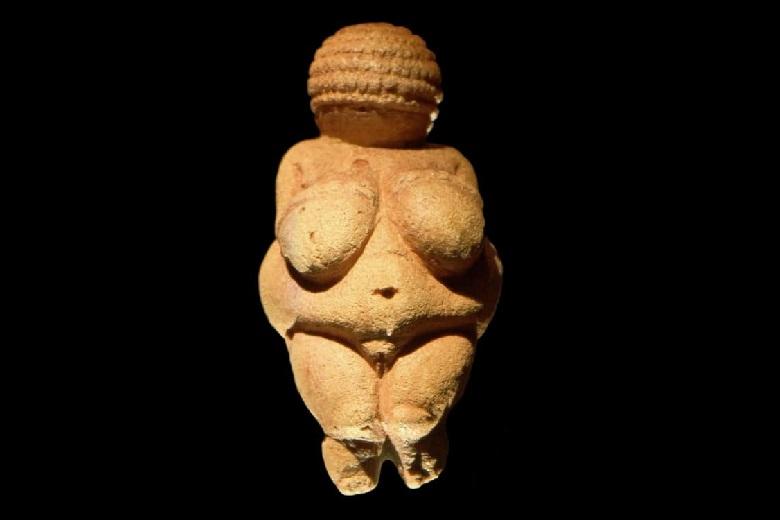
Venus of Willendorf is a limestone figurine. Various sources claim different ages, but most scholars believe it was created in 28,000 – 25,000 BC. So it dates from about the same era as the Apollo 11 stones – the Paleolithic period.
There are also later versions of Venus of Willendorf, some of which were made somewhere between 24,000 and 22,000 AD. BC, but they all usually depict naked women (possibly the goddess of fertility).
The harsh reality of Paleolithic life was that many mothers died in childbirth. It is a grim reminder of how far people have come in medicine, as well as the sacrifices made by distant ancestors to keep people growing.
The creators of Venus of Willendorf paid great attention to the chest and groin of the figurine, while the rest of the figure is relatively rudimentary. This gives an idea of the consciousness of the creator of the figurine. Unfortunately, dating such Venus figurines is especially difficult because the very concept of “prehistoric” means that writing did not exist yet, so researchers must rely on inferences, comparisons with other objects, and, of course, radiocarbon analysis to determine when these objects were created.
Jericho Skull
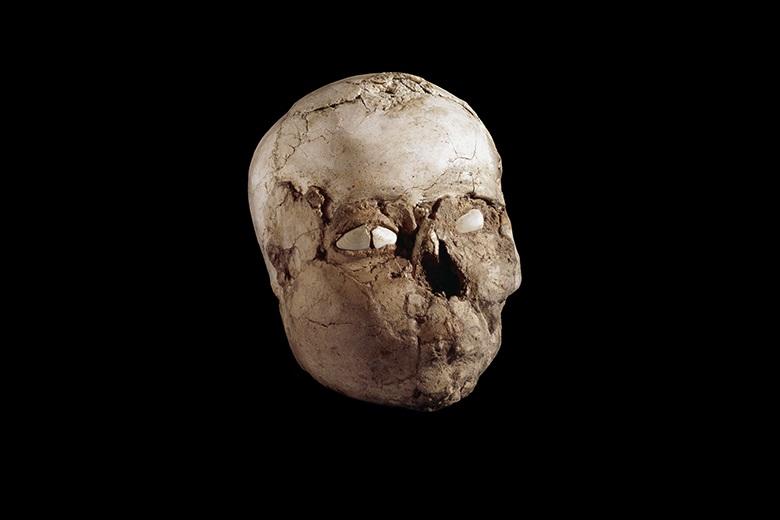
The Jericho Skull is not just an ordinary skull dating from prehistoric times; it is an artistic sculpture. The work is essentially a plastered skull with white stones inserted into its eye sockets to mimic human eyes.
The Jericho Skull (Neolithic, circa 7200 BC) age makes it one of the first portrait sculptures of humankind. Researchers were able to use computed tomography to restore the appearance of a man whose head became the “Jericho Skull” after death.
It lived about 9,200 years ago and faced several “troubles” during his lifetime (he had a broken nose and suffered a head injury shortly after birth, which affected the shape of his skull). Today the Jericho Skull is in the British Museum in London.
The sculpture was discovered, among others, in the Jericho area on the West Bank, one of the sites that have been continuously inhabited for the longest period (the first settlement in the Jericho area is believed to have been founded around 9000 BC).
Anthropomorphic stele
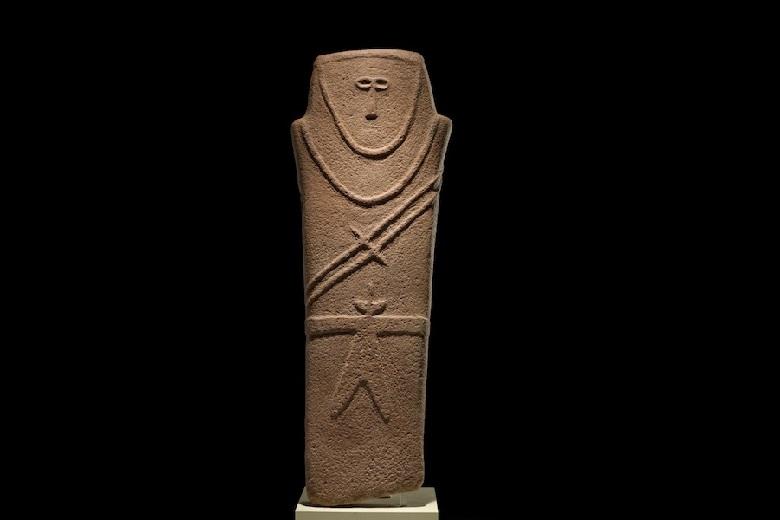
The next item on the list is an anthropomorphic stele found in the city of Hail in Saudi Arabia. This freestanding stone sculpture, which was carved in the shape of a standing man, dates from the 6th-4th millennia BC.
This structure is not alone, many sculptures of this kind have been found in neighboring cities, and all of them date back to the pre-Islamic world of Saudi Arabia.
These artifacts were created by various hunter-gatherer tribes who lived in the region at that time, long before the advent of Islam.
Their creators were nomads forced to migrate, searching for a suitable habitat by the constantly changing climate. It should be noted that this area was more like a savanna and not like a desert, as it is today, but the climate often changed in that era.
While it is unclear why humans created the stele at the time, it probably had some religious significance; most scholars believe it “adorned” a prehistoric burial site.
Hall of the bulls

The Hall of the Bulls is part of the Lascaux Cave, located near the French village of Montignac. It displays images of animals on the walls, which are not only stunningly detailed and beautiful but also convincingly testify to the imagination and abilities of the people who created them.
This is the “Sistine Chapel” of the Paleolithic period, in which artists decorated this cave with the perfect paintings of animals ever created in this world.
The rock paintings are believed to have been created between 16,000 and 14,000 BC. in a cave located in the rural part of southwestern France.
One of the frescoes is an enormous 3.5 meters wide, much larger than the usual cave paintings that everyone is used to seeing in photographs. Given the time of its creation, the elegance of this work of art is staggering, considering that back then, people lived short, brutal, often cold, and painful lives. But they still knew how to find the strength in themselves to create something beautiful.
Stonehenge
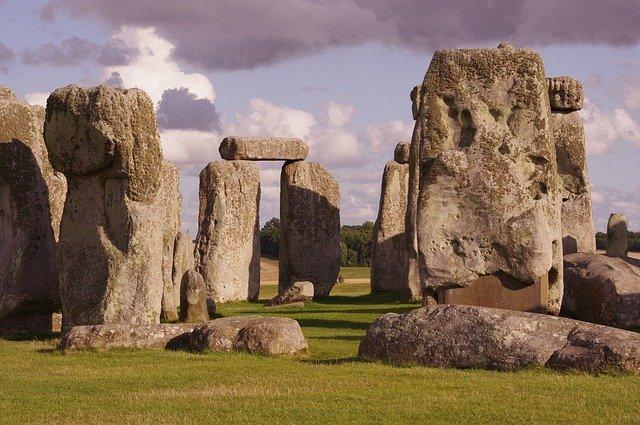
Stonehenge is one of the most famous prehistoric works of art in the world. It is a circle of massive stones that seems to have been conceived as worship and religious ceremonies in prehistoric times.
Stonehenge was built over the centuries, starting around 3000 BC. This massive structure in England, like the Egyptian pyramids, is amazing in that it is even difficult to imagine how it was possible to complete its construction during the Neolithic.
It all started around 8000-7000. BC, when ancient people began to erect wooden pine structures and dig ditches near the area. Then over time, thousands of years later, people began to place stones on top of each other, forming a massive structure, like a wall, the perimeter of which formed a circle. Part of the area around Stonehenge was also used for burials.
Bhimbetka rock

While not very elaborate or aesthetically stunning, Bhimbetka’s “rock” is one of the most significant prehistoric works. In the rock dwellings of Bhimbetka in India, many similar have been found, which are small hemispherical holes carved into the rock.
There are paintings on the cave walls that date back to approximately 30,000 years, but the main attention of scientists has been drawn to the indentations in the stone that are at least 290,000 years old. Moreover, some scientists have even suggested that these “carvings” can date back even 700,000 years.
That’s right; these spherical grooves may predate humanity. For thousands of years, people have sought in this cave a refuge from the harsh natural conditions and a place where they could cook food and spend the night. Thus, we can say that the whole history of humanity is written on these walls.




